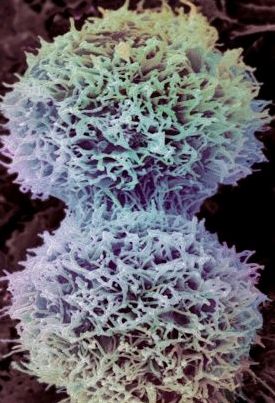As in all other kinds of cancer, cervical cancer causes are also not fully understood, though we do know that the HPV infection (infection by the human Papilloma virus) is implicated in nearly all cases of cervical cancer.
Cancer of the cervix is a malignancy found to be present in the cervical area; which is the narrow portion of the uterus that joins the top of the vagina.
 Though all the cervical cancer causes are not fully understood, the risk factors that increase chances of a woman developing the condition are known and modern screening practices are thought to have been able to reduce rate of invasive cervical cancer by as much as 50%.
Though all the cervical cancer causes are not fully understood, the risk factors that increase chances of a woman developing the condition are known and modern screening practices are thought to have been able to reduce rate of invasive cervical cancer by as much as 50%.
It is important to identify and be educated about cervical cancer causes, as well as the risk factors that contribute to this cancer because it very often shows no symptoms until the later stages of the disease.
Common symptoms include bleeding from the vagina, painful sexual intercourse, other kinds of vaginal discharge and rarely a lump or growth in the area.
However many or all of these symptoms may actually be absent until the later stages of the disease.
It is also crucial to have regular pap smears done as recommended, particularly if a woman is seen to be at high risk of cervical cancer.
The main cervical cancer causes are
- Diagnosis of an HPV infection is thought to be the most significant indicator of cervical cancer, though not all strains of the virus (there are thought to be about 150) increase this risk.
- Having multiple sexual partners (or having sex with men with multiple sexual partners) is another factor that contributes causes of cervical cancer.
- Being sexually active early in life; i.e. before the age of 18 is also known to increase risk of the disease.
- Not having regular pap smears as recommended or conditions such as poverty and distance from medical services can also increase risk of this kind of cancer.
- Smoking and other forms of tobacco use is known to increase risk of nearly all cancers and similarly cervical cancer as well.
- Lifestyle factors also form part of the cervical cancer causes – unhealthy food habits can contribute to risk, as can a generally weakened immune system, that is unable to fight infection effectively.
- Douching is known to contribute to cervical cancer risk because it is known to destroy the good bacteria present in the cervical area that protect the system against infections.
- Studies have also shown that the oral contraceptive pill can also increase risk of developing the genital warts; in particular among those women who have been on the pill for longer than 5 years and those who have started off on the pill before the age of 25.
The presence of genital warts is known to dramatically increase cervical cancer risk. - Working with certain chemicals or otherwise increased exposure to chemicals may also be one of the cervical cancer causes, so occupational hazards can also contribute to the risk factors of the disease





